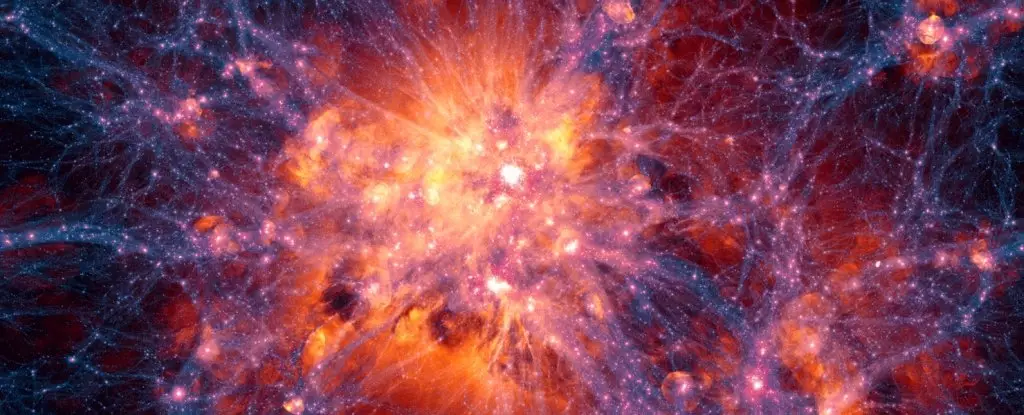Over a century after Albert Einstein first formulated his theory of general relativity, the scientific community continues to find compelling evidence supporting its predictions. In one of the largest tests to date, astronomers, led by the Lawrence Berkeley National Laboratory’s Dark Energy Spectroscopic Instrument (DESI), have mapped nearly 6 million galaxies across an expansive timeline of 11 billion years. This monumental study not only reaffirms the principles of general relativity but also offers fresh perspectives on the structure and evolution of the cosmos. The team’s findings illustrate how gravity dynamically influences galaxy distributions within the ever-expanding universe, adhering closely to Einstein’s original hypotheses.
Mapping the Cosmic Web: A New Era of Observational Astronomy
The recent results from DESI are ground-breaking, representing a significant leap for observational astronomy. The project, initiated in 2019, aims to explore various aspects of the universe’s large-scale structure. With a detailed analysis focused on the data collected during its first year, the team scrutinized 5.7 million galaxies and quasars. According to cosmologist Pauline Zarrouk of the French National Center for Scientific Research, this research is not merely about validation—it serves as a critical test of gravitational theories at cosmological scales, allowing scientists to better understand the formation rate of galaxies and their correlations as they evolved over time.
This extensive cosmic mapping highlighted the intricate gravitational influences that result in the clustering of galaxies along large filaments, commonly referred to as the cosmic web. This web, fundamentally governed by gravity, showcases how dark matter and regular matter intermingle—a phenomenon described accurately by general relativity in a way that aligns with current observations.
The Unseen Forces: Dark Matter and Dark Energy
Two of the universe’s most elusive and enigmatic components, dark matter and dark energy, play pivotal roles in cosmic evolution. Dark matter, constituting nearly 25% of the universe, remains undetectable through traditional means; yet, its gravitational presence is felt throughout the cosmic web. Meanwhile, dark energy, accounting for roughly 70% of the universe, is the mysterious force propelling the accelerated expansion of cosmic structures.
The DESI collaboration is poised to deepen our understanding of these fractions of the universe during its ongoing survey. Physicist Mark Maus illustrated the mystique surrounding these entities, expressing how we have just begun to grasp their significance. As the DESI team gathers data from millions more galaxies, they hope to unearth crucial insights into both the nature of dark matter and the mechanisms behind dark energy, which could ultimately illuminate unresolved questions in astrophysics and cosmology.
While general relativity has undergone extensive validation at smaller scales, the new evidence from the DESI initiative signals a potential turning point in understanding gravity’s operational principles at grand scales. The findings challenge the scientific community to consider modifications to gravity theories—essentially probing whether dark energy and gravity as we know it can address longer-standing issues in theoretical physics.
In particular, the exploration into neutrino masses emerges as a salient topic from the recent analyses. Neutrinos are notoriously “ghostly” particles, making them difficult to measure accurately. As the gravitational landscape evolves through DESI’s continued observations, there’s hope that researchers will place tighter constraints on the upper limits of neutrino mass, which may have profound implications for the Standard Model of particle physics.
The path paved by the DESI collaboration does not end with these preliminary explorations; rather, it represents the initial phase of a monumental undertaking. As the team continues to analyze data from the first three years of operation, the prospect of accumulating data on over 40 million galaxies looms large. Such vast datasets present unique opportunities to unravel the complexities of cosmic evolution and the unseen forces that govern it.
As Dragan Huterer, a physicist from the University of Michigan, aptly summarized, we are “only at the tip of the iceberg.” The DESI collaboration is set to enhance our understanding of the interplay between gravity, dark energy, and dark matter in unprecedented ways. These studies may not only affirm the tenets established by general relativity but could also pave the way for revolutionary theories that further our comprehension of the universe.
As the discoveries emerge from the DESI project and similar initiatives, the broader scientific community finds itself at the convergence of classical physics and modern challenges. The enduring nature of general relativity continues to be validated against the cosmos, yet the excitement lies in the potential to encounter anomalies that could reshape our understanding. In efforts to demystify cosmic phenomena and address age-old questions, researchers hope to unlock the secrets surrounding dark matter, dark energy, and the very fabric of the universe, ensuring that the journey of discovery remains vibrant and full of possibilities.


Leave a Reply